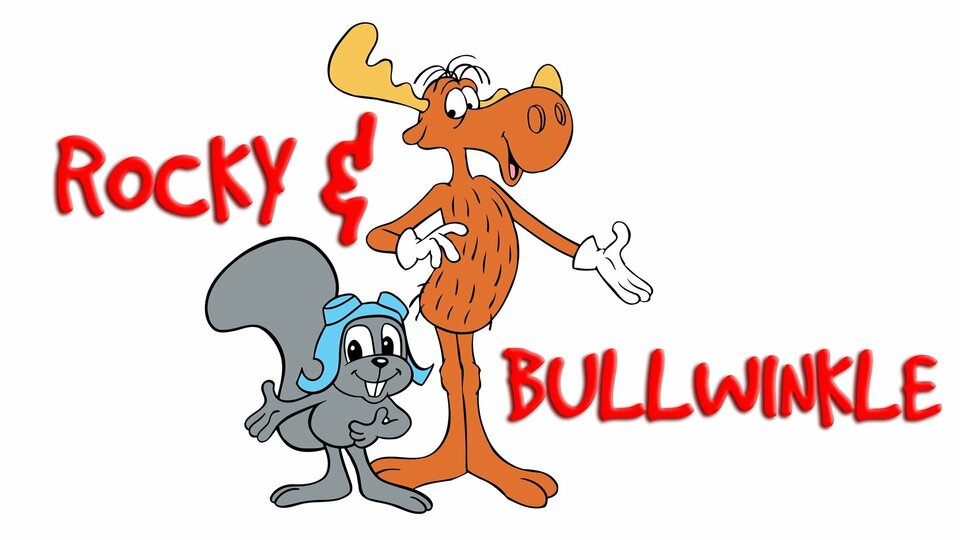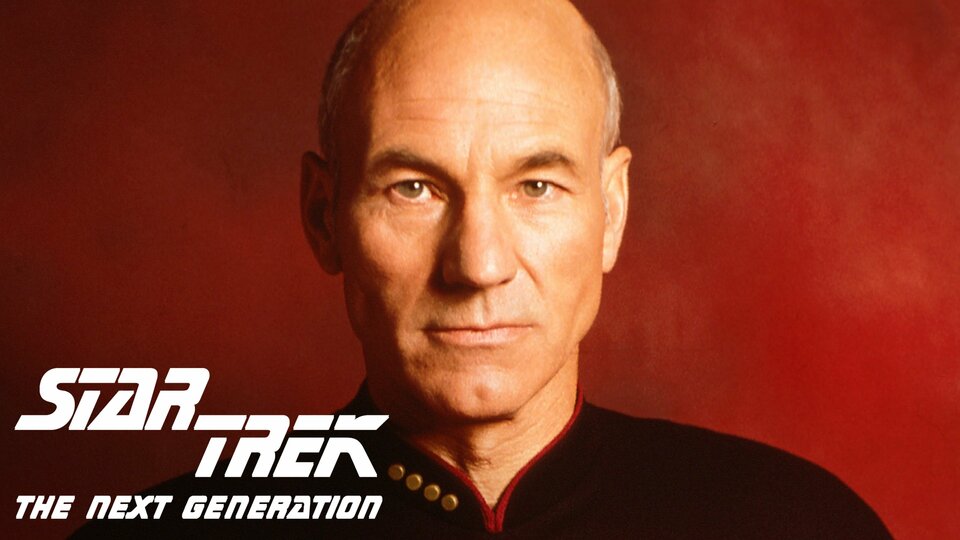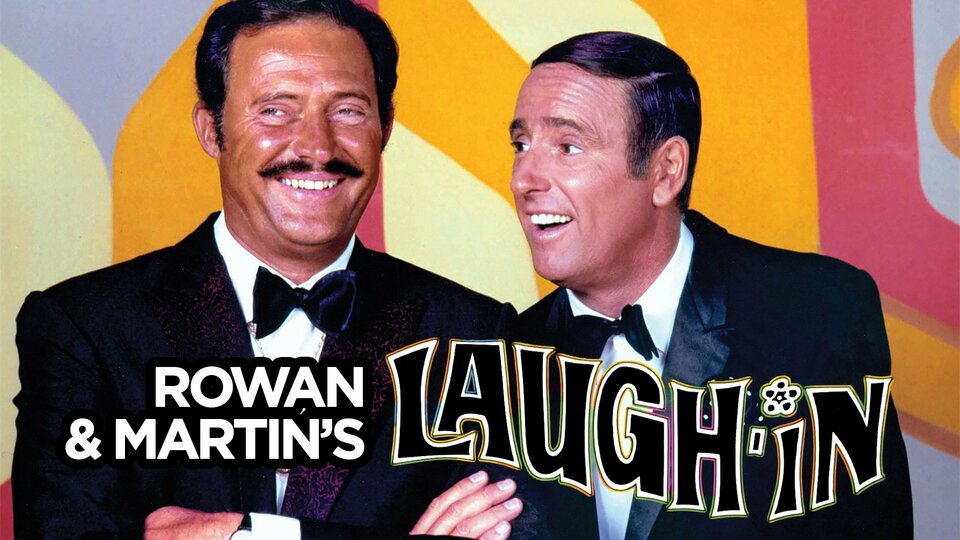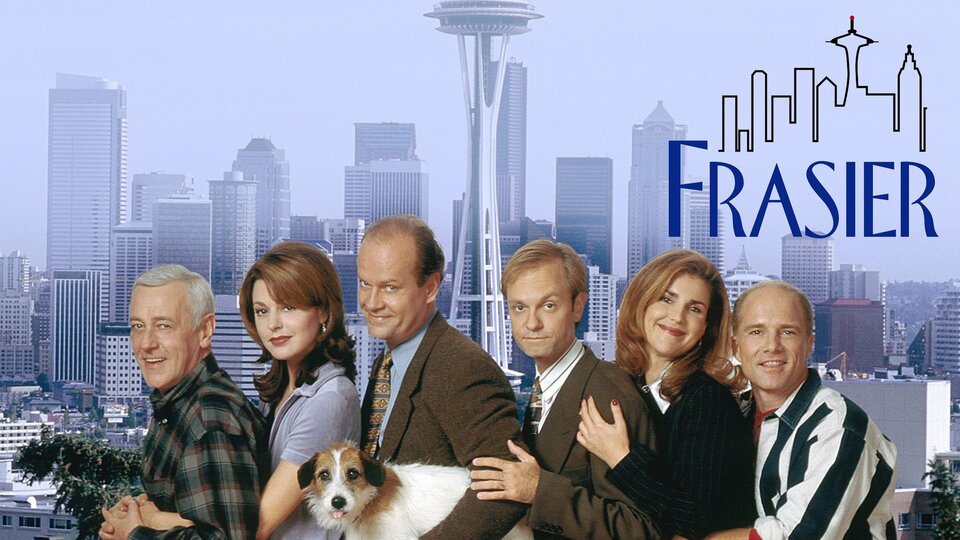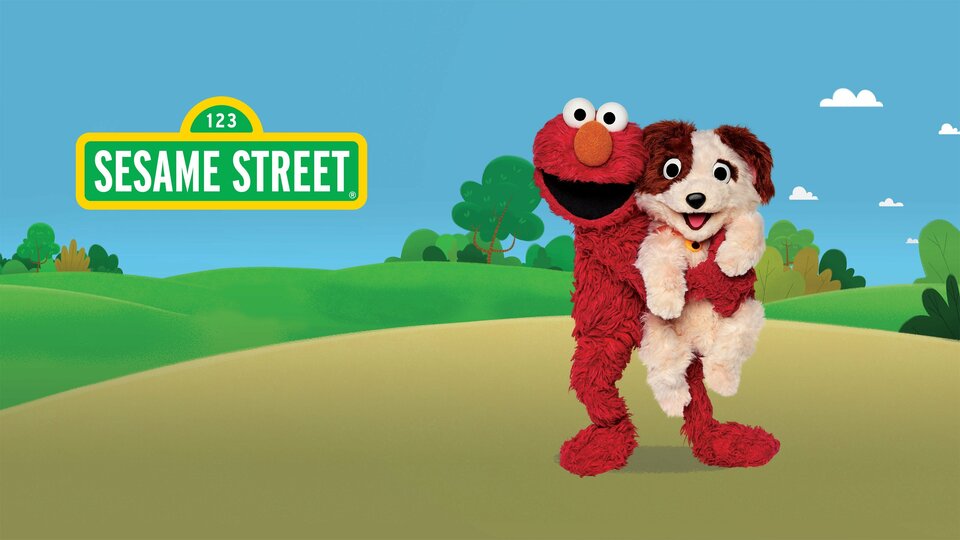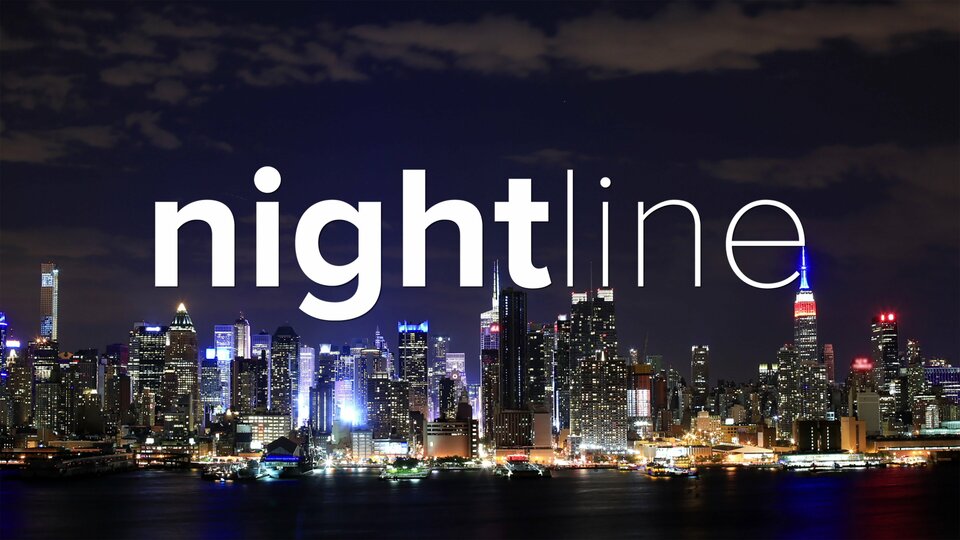50 Greatest Shows of All Time
Editor’s note: This list was first published in the May 4, 2002, issue of TV Guide Magazine.
Mike Wallace and a vampire slayer? Letterman and Oprah? Andy Griffith and the Sopranos? On one list? What were we thinking? Simply put, the best of the best, from Day 1 to last night: quality, innovation and the ability to stay in our lives year after year after year. A touch of sentiment? Sure, but nostalgia alone couldn’t make the cut (sorry, Beav). And TV-movies, miniseries and specials will have to wait. These are the series we watched regularly — and will watch again. And again.
Bewitched
Bewitched was “Blithe Spirit” in Donna Reed’s neighborhood, a comedy that flew miles above its cute gimmick. Before settling into the mundane Dick Sargent years, Bewitched was a charmer about a mortal man, Darrin Stephens (Dick York, until 1969), married to a lovely sorceress named Samantha (Elizabeth Montgomery). The cast was out of this world: Agnes Moorehead as divinely dismissive Endora, Marion Lorne as short-circuited Aunt Clara, Paul Lynde as catty Uncle Arthur. And best of all, the serenely beautiful Montgomery, whose Grace Kelly looks matched a flair for light comedy that was pure magic.
The Oprah Winfrey Show
After Phil Donahue listened to the concerns of American women, Oprah Winfrey became their passionate advocate and spiritual adviser. By managing to seem of her audience as well as an inspiration to it, Winfrey has become the most powerful and beloved woman in television. She has examined important issues too numerous to list, and done so with a candor and compassion rare on daytime TV. Even viewers who don’t always share Winfrey’s New Age–like spirituality stay in touch: You don’t let your best girlfriend travel those roads alone.
Taxi
The stories weren’t always top-notch, and viewership was so come-and-go that the series was canceled twice (first by ABC, then by NBC), but Taxi had some drivers that could navigate any bump in the road. This was a comedy about characters, and it gave us some of TV’s best: Judd Hirsch’s world-weary Alex Reiger, Tony Danza’s just this side of punch-drunk Tony Banta, Marilu Henner’s sparkling Elaine Nardo, Andy Kaufman’s befuddled Latka Gravas, Christopher Lloyd’s even more befuddled “Rev.” Jim Ignatowski. And, oh yeah, Danny DeVito’s Louie De Palma, Taxi’s gift to the world: Open with caution, and enjoy.
Rocky & Bullwinkle
Good writing makes the moose. Fully aware that TV couldn’t compete visually with film animation, creator Jay Ward drew on outrageous wordplay, Cold War satire and a marvelous sense of the absurd to map the way for every adults-love-it-too cartoon to follow. Rocky the squirrel got top billing in this weekly series, but the true star was Bullwinkle, a dim-witted moose resembling a peanut with antlers. “The animation was embarrassing,” says Rocky film editor Skip Craig, “but I knew the voices and the writing had the makings of a classic. It was all just to make Jay laugh.”
Star Trek: The Next Generation
After nearly 20 years, the expectations were cosmic. Devoted fans of the original Star Trek were either skeptical or outraged over the idea of new voyages for a new U.S.S. Enterprise. But even die-hard Trekkers came to acknowledge that Next Generation not only equaled but surpassed the original — and not just with production values or star Patrick Stewart. Even when taking on weighty issues, from racism and religion to the very question of what it means to be human, Next Generation never sacrificed the flash-bang fun of a sci-fi universe.
Twin Peaks
FBI agent Dale Cooper (Kyle MacLachlan) into a minirecorder: “Diane. 11:30 A.M. February 24. I’m entering the town of Twin Peaks…I’ve never seen so many trees in my life.” And viewers had never seen anything like Twin Peaks — a twisted, stylized thriller. Or maybe a comedy? Bizarre images, beginning with the disturbingly beautiful corpse of a homecoming queen wrapped in plastic, were cryptic clues to creator David Lynch’s central mystery: Who killed Laura Palmer? As viewers began to suspect that even Lynch wasn’t sure of the answer, the series degenerated into incoherence. But for that first season, Peaks was as exhilarating and terrifying as a night lost in the woods.
The Bob Newhart Show
You’d have to be crazy not to love this deadpan classic. Played to flat-line perfection by Newhart, Dr. Bob Hartley was a wise, sometimes wizened psychologist with an appointment book full of endearing head cases, from the 98-pound meekling Mr. Peterson (John Fiedler) to the misanthropic Elliot Carlin (Jack Riley). Also at the office: swinging- bachelor dentist Jerry Robinson (Peter Bonerz) and efficiently goofy receptionist Carol (Marcia Wallace). Back home, there was neighbor Howard (Bill Daily), a flighty pilot. But what anchored Bob (and this series) was his smart, husky-voiced wife, Emily (Suzanne Pleshette). How did the hangdog Hartley land lovely Emily? Crazy chemistry.
Bonanza
The orange fire flickering through the Ponderosa map, opening a frontier of pine-green forests and blue skies, was one of the earliest and brightest color TV images. But if viewers came for the color, they stayed for the Cartwrights: smooth Adam (Pernell Roberts, until 1965), hearty Hoss (Dan Blocker), impetuous Little Joe (Michael Landon) and the unflappable (if unlucky in love) papa, three-time widower Ben (Lorne Greene). The writers fashioned the series as a western Camelot peopled with the knights of the Ponderosa. By the time it rode into the sunset, Bonanza was pure Americana.
Rowan & Martin’s Laugh-In
TV’s most exhilarating hour in the late 1960s was hosted by two sly guys (Dan Rowan and Dick Martin) who looked as though they’d just arrived from Hef’s mansion. Firing one-liners, tossing buckets of water and zooming in on the graffiti’d, go-going bodies of Goldie Hawn and Judy Carne, Laugh-In was one very groovy swirl of politics, sex and old-fashioned slapstick. With the possible exception of Saturday Night Live, no show has produced more catchphrases (“Here come de judge,” “Sock it to me,” “You bet your sweet bippy,” “Verrry interesting”) or turned more unknown comics (including Jo Anne Worley) into overnight sensations. “Weekend Update” owes a lot to “Laugh-In Looks at the News.” And CNN’s “crawls”? Laugh-In, reminds Henry Gibson, the show’s mild-mannered poet, “Was that doing that 35 years ago.”
Buffy the Vampire Slayer
A monster show among TV’s greatest? Here’s why: Stylish, scary, sexy and smart, Buffy the Vampire Slayer (has any series ever been less well served by its title?) is a genre-busting original, defying and impressing skeptics with cleverly crafted allegories of good and evil. Creator Joss Whedon uses the supernatural to probe teenage angst, family issues and just about anything else that crosses his mind. His offbeat thriller has embraced styles as eclectic as silent film and movie musicals, stretch- ing far beyond the show’s source (Whedon’s forgettable 1992 film of the same name). Whedon “wasn’t just setting out to make a teen show,” says Alyson Hannigan, who plays resident witch Willow. “He wanted to make a great show. It had teens in it, and it was about high school, but it’s about so much more.” We’re believers.
Gunsmoke
Twenty years. 633 episodes. Gunsmoke was more than a show — it was a phenomenon. Until Marshal Matt Dillon (James Arness) came to town, TV Westerns were mostly the province of Lone Ranger–style kid stuff, but this tough and tense drama (adapted from radio) changed all that. By 1959, TV had as many as 30 Westerns on its prime-time schedule. Most came and went like tumbleweeds. Gunsmoke was there when the dust cleared.
The Rockford Files
Rockford was a maverick from the beginning. Producer Roy Huggins, pressured by ABC to fill airtime after a writers’ strike, picked the name out of a phonebook and ordered protégé Stephen J. Cannell to write a detective show called The Rockford Files. Cannell came up with one of TV’s most charming antiheroes, a detective who had unjustly spent time in prison and would sooner hand over his car keys than challenge a bad guy. ABC hated it and passed. Huggins, whose Maverick had made a star of actor James Garner, recruited his old friend, creating TV’s equivalent of alchemy: a genre series utterly transformed by a star into something special, even unique. NBC loved it. Rightly so.
The Larry Sanders Show
Petty, venal, selfish and paranoid. It’s difficult to imagine a less lovable crew than those staffing the show-within-a-show, both named The Larry Sanders Show. There was Sanders himself, the host (Garry Shandling) brilliant in front of the camera, all but vanishing when the spotlight was out; Hank (Jeffrey Tambor), the second banana who dreamed of the day his boss would slip on a peel; and foul-mouthed producer Artie (Rip Torn), as loyal to Larry as he was vicious to others. If you’re unlikely to meet less endearing characters, it’s even less likely you’ll find a TV satire as incisive and flat-out funny. The laugh-till-you-cringe comedy offered a backstage, backstabbing view of life behind the scenes. “We punctured our own characters,” says Tambor. “Sometimes gently. Sometimes savagely.”
The X-Files
We could handle the truth — even if we didn’t always understand it. The murky depths of The X-Files were filled with creator Chris Carter’s nightmarish brew of paranoia, suspense, off-kilter humor, mysticism, faith and aliens given to grisly mischief. Keeping the series from degenerating into just another creep show was the smoldering star power and muted sensual undercurrent generated by its haunted protagonists: FBI agent Fox Mulder (David Duchovny), on a lifelong quest to discover the truth behind his sister’s alien abduction, and his skeptical but loyal partner Dana Scully (Gillian Anderson), whose scientific pragmatism was continually shaken by her strange adventures. The X-Files made us jump — but it also made us think about the wonders of a very mysterious universe.
The Fugitive
A basso-profundo introduction (“Name: Richard Kimble.… Destination: death row”) set the noirish tone for this unique study of paranoia and panic. Perpetually nervous David Janssen was the doctor wrongly accused of murder, ever on the run from Lieutenant Gerard (Barry Morse) and always hunting for the real killer. A road show of tension and adventure, this series was powerfully compelling right up to its record-breaking finale.
Roseanne
Loud, crass and proud of it, Roseanne was the freshest working-class comedy of its age. It trashed stereotypes about TV families while creating an unforgettable clan all its own (headed by Roseanne and John Goodman). Like the fictional Conners, the show was chaotic, veering wildly from season to season. But at its best, Roseanne was as funny, tempestuous and endearing as the star herself.
Frasier
It could have gone the way of many a spin-off, but this Cheers offspring did more than just move snobby psychiatrist Frasier Crane (Kelsey Grammer) from a Boston bar to a Seattle radio station for his weekly comeuppance. The comedy stems from Frasier’s inability to figure out his own life while he pompously doles out advice to others. Blessed with a sparkling ensemble, Frasier, after nine seasons, is a feast of repartee and highbrow high jinks.
Playhouse 90
The golden aura of 1950s television as a haven for live drama is burnished by memories of Playhouse 90. In just its second broadcast, the anthology series demonstrated what the medium could achieve with Rod Serling’s “Requiem for a Heavyweight,” starring (and making a star of) Jack Palance as a broken-down boxer. “Requiem” set the tone for Playhouse 90, which went on to stage original productions of “The Miracle Worker” and “Judgment at Nuremberg,” and presented such actors as Jack Lemmon, Paul Newman and Joanne Woodward in a rush of artistic accomplishment. Even today, Playhouse 90 is synonymous with bold, high-quality TV.
An American Family
Meet the Louds, just your typical American family. At least that was the initial idea, but when this 12-episode documentary series aired in 1973, audiences were both horrified and fascinated. Long before reality TV was even a concept, viewers watched the marriage of Bill and Pat Loud disintegrate, even witnessing the moment Pat told Bill she wanted him out of the house. And then there was eldest boy Lance, America’s first openly gay son (take that, Real World). Forget the preening, posing Survivors. An American Family was the real thing.
The Defenders
Before legal dramas became as commonplace as frivolous lawsuits, Preston & Preston hung out its shingle on The Defenders. Like the genre itself, Kenneth Preston (a pre-Brady Robert Reed) was barely out of school, an idealistic young lawyer in practice with his pragmatic father, Lawrence Preston (E.G. Marshall). Over a four-year run, the two developed a grudging respect as they ripped cases from headlines decades before Law met Order: abortion, civil rights, mercy killing. The Defenders was one of the era’s great socially conscious programs and sharp enough to let its legal eagles break a wing now and then.
Your Show of Shows
In an age not exactly renowned for rule breaking or edginess, Sid Caesar was the anti-Berle, tossing away the shtick and inventing a hipper style of TV comedy that influenced everything up to and including Saturday Night Live. “I never went with jokes,” Caesar recalls. “The situation made it funny, not the joke.” Caesar, along with Imogene Coca, Carl Reiner and Howard Morris, was parodying movies years before Carol Burnett donned a curtain rod, and his writers (including Neil Simon, Mel Brooks and Woody Allen) found laughs where other comics of the day didn’t look: suburban boredom, modern jazz, the military. Your Show of Shows was the 1960s waiting to happen.
Donahue
Phil Donahue didn’t invent the daytime talk show, but he certainly got serious about it. In 1967, at a local station in Dayton, Ohio, he pioneered the now ubiquitous format mixing social issues and celebrity guests with audience (and caller) participation. Donahue moved to Chicago, then New York, and Phil stayed the perfect host with every move — smart, provocative, empathetic. Donahue
shared his stage with a remarkably diverse group of people, but unlike the Jerrys and Rickis who would follow, he never screeched, chastised or mocked. “He’s the granddaddy of us all,” says Maury Povich, and Donahue can’t be blamed if that doesn’t always seem like a compliment. When he held
the microphone, he did daytime proud.
The Cosby Show
Huxtable was an understanding father: He understood exactly what the kids were up to. Cliff’s frank and funny parenting — Bill Cosby was at his best in those sweet tête-à-têtes with the kids — made for one of the decade’s best, most popular comedies. Cliff and Claire (Phylicia Rashad) lovingly headed a smart, sophisticated, affluent African-American family — and if you think that’s nothing remarkable, you haven’t been watching much television lately. We can’t think of another comedy with the warmth, class and style of Cosby.
Sesame Street
Before Rugrats, Blue’s Clues or even The Electric Company, there were Bert, Ernie, Big Bird and Sesame Street. How has the show held wandering attention spans all these years? Is it Jim Henson’s Muppets, that colorful gang so well suited to young viewers? The whimsical approach to education? The diversity? The gentle spirit? Correct answer: All of the above, of course, in addition to the main reason it’s on this list — Sesame Street has refused, year after year, to either sell out or sell short its audience.
The Twilight Zone
Could the ’60s have been the ’60s without The Twilight Zone? Sometime between Eisenhower and Dylan, Twilight Zone gave us the imagination for a new era. These far-out plots in gritty black and white blended all things sci-fi, horror and just plain creepy, served with a twist and a message. Pick your favorite moment: bookworm Burgess Meredith surviving a nuclear holocaust, only to break his Coke-bottle reading glasses; a snooty little boy (Billy Mumy) turning a man into a jack-in-the-box; William Shatner going batty when nobody believes a monster really is outside the airplane. “Serling,” says Shatner, “was a nice guy, with a very twisted imagination.” And we’re all the better for it.
M*A*S*H
MASH could have recruited its characters from any Hollywood chestnut: the priggish major, the naive corporal, the well-meaning colonel. MASH clearly understood the rules, which made the breaking all the better. Alan Alda’s Hawkeye Pierce was a TV doctor like never before, a humanist braveheart with a Groucho delivery. The series finale might have come a season or two late, but more than 100 million viewers tuning in made clear that something very special was passing. MASH fought a good fight — and won.
Law & Order
The brilliance of concept. Executive producer Dick Wolf meshed two durable genres — cops and courtrooms — into one package. Lean and mean, without wandering down side alleys into its main characters’ personal lives, Law & Order has survived numerous cast defections (including Benjamin Bratt), spawned two spin-offs so far (both popular, neither as good) and has been renewed through the 2005 season, securing its place as TV’s longest-running drama.
Nightline
Nightline has always thrived under crisis, from the Iranian hostage situation to ABC’s threat this year of replacing the show with David Letterman (Letterman declined). Despite being cloned by any number of all-news channels, the late-night news program hosted by Ted Koppel has held its format— topical taped segments followed by live interviews — since it emerged from a nightly series of hostage what makes Nightline important? In a word: Koppel. With a calm, move-it-along style, he brings intelligence and sound judgment to a TV universe always on the verge of being overtaken by loud-mouthed tough guys and leggy blond poseurs.
ER
Don’t blink. In the first 217 seconds of the classic 1994 Christmas episode “The Gift,” someone’s hallucinating in a locked room, a hand injury is being stitched, there’s a head trauma on the way, an electrical burn in room 1, a “weak and dizzy all over” in 2, a torn cartilage in 3 and a nearly drowned boy being carried in by his father. That’s ER: a classic doctor show pumped up on steroids. Yet within the rush of jargon and spilled body fluids are quiet pockets of desperation, loneliness and friendship. Despite the occasional dip in vital signs — the departures of George Clooney, say, or Julianna Margulies — ER has never lost its pulse.
Friends
Little wonder these characters keep falling in love with one another. Who wouldn’t flip for a great-looking sextet and their carefree lives in a Manhattan where snappy comebacks and cappuccino are in endless supply? A chemistry textbook in cast dynamics could be written about Friends, and every time we think we’ve outgrown these old pals, they reinvent themselves. Honestly, could you have predicted seven years ago that Joey (Matt LeBlanc) would one day be this show’s best friend? And next season it could be any of the others. Each is there for the other, and for us.
St. Elsewhere
St. Elsewhere gleefully defied TV’s medical establishment of immaculate hospitals run by godlike physicians. At St. Eligius, the Boston hospital disparaged as “St. Elsewhere” by more hotshot medical centers, Dr. Donald Westphall (Ed Flanders) led a staff of flawed, quirky doctors and nurses (played by, among others, Denzel Washington, William Daniels and Christina Pickles). The series had comic moments but really grabbed viewers’ throats with such shockers as the suicide of Dr. Wendy Armstrong (Kim Miyori) and the brutal shooting of rapist/doctor Peter White (Terence Knox). No, this was not Ben Casey’s hospital.
thirtysomething
Marshall Herskovitz and Ed Zwick’s look at baby boomers was a TV milestone, and not just because it so completely captured the yuppie decade’s zeitgeist. The more enduring achievement of thirtysomething was its intricate mining of life’s small moments as the stuff of big drama. First reactions to the show’s often painful intimacy included some groans, but loyal viewers recognized an undeniable air of truth. And if thirtysomething never took itself as seriously as naysayers claimed, neither did it shy away from heartbreak or loss as it ventured to new dramatic depths.
Cheers
Yes, you can meet someone special in a bar. In fact, audiences met quite a few at a place called Cheers. Norm, Carla, Coach, Woody, Cliff, Frasier, Lilith, Rebecca — the cast of characters was enough for any three series. And at the heart of it was the fiercest, funniest flirtation TV had ever witnessed, a pair of attracted opposites so perfect together (and apart) that their names became synonymous with the keep-’em-separated school of comedy: Sam and Diane. Ted Danson was the ex-jock barkeep crazy for, and driven crazy by, the overly intellectual waitress (a perfectly cast Shelley Long). The ensemble scenes bubbled, but Cheers really earned its name when Sam and Diane retreated to the office for battles of wit that turned star-crossed bantering into true art.
Today
From its earliest days, when original host Dave Garroway went from reading headlines to hanging out with a chimp, NBC’s morning show proved that news and entertainment were not mutually exclusive. Millions of viewers have demanded a daytime jolt ever since. Created by the late Sylvester “Pat” Weaver, Today was a foundation for every news program and talk show; its roster of hosts, from Barbara Walters to Katie Couric, reads like a who’s who of broadcast news. A half century later, no other show has improved upon the formula.
The Carol Burnett Show
The Carol Burnett Show had a goofy elegance and moments so truly classic that they redefine the overused term. Led by the ear-tugging, Tarzan-yodeling, Bob Mackie-clad Burnett, this paragon of the comedy/variety format really hit its stride in the 1975–77 years (Lyle Waggoner out, Tim Conway in as regulars). But The Carol Burnett Show would have been great in any era. As Vicki Lawrence says, “The show has a warm, fuzzy spot in people’s hearts. It takes you to a wonderful spot.
The Ed Sullivan Show
Against all odds, a long-faced newspaper columnist from New York City became a Sunday-night fixture for 23 years. With an unerring nose for talent, Sullivan introduced most Americans to Elvis and the Beatles. He championed African-American artists like Pearl Bailey, Lena Horne and Richard Pryor, and blithely ignored television’s self-imposed generation gap — who else welcomed both Ethel Merman and Janis Joplin? Today’s audiences might be too fractured to support a Sullivan-esque show. But if you’re looking for a time capsule…
Hill Street Blues
This noisy, low-lit, raw-looking cop show didn’t present cut-and-dried cases and didn’t have stars. What Hill Street Blues gave us was the first police drama with soul and grit. Watching Officers Hill and Renko on the beat — they were almost killed in the premiere — gave the feel of what an average cop’s life was really like. Sometimes the life made them crazy (remember Belker screaming “Dogbreath!” while biting felons?). Sometimes it made them blur professional lines, as in Captain Furillo’s steamy romance with public defender Joyce Davenport. The complexity that cocreators Steven Bochco and Michael Kozoll brought to their characters and continuing story lines, coupled with Hill Street’s edgy camera work, gave the show a chaotic excitement that pioneered a new wave of adult drama steeped in realism.
The Dick Van Dyke Show
Carl Reiner didn’t like the scripts he was being sent. So he wrote one for himself about himself: a TV writer living in New York’s New Rochelle, working in Manhattan and his experiences in both places. There had been family comedies before and office comedies, but this one combined the two beautifully. Dick Van Dyke trusted the audience to keep up — a task made simple by stars Van Dyke, Mary Tyler Moore, Rose Marie and Morey Amsterdam. “They were so easy to watch,” says Reiner, who played boss Alan Brady. “They had a twinkle. If you gave them good material, the combination was irresistible.”
The Tonight Show Starring Johnny Carson
Six months and two days after late-night neurotic Jack Paar walked off The Tonight Show, a replacement arrived: a young game-show host named Johnny Carson. Tonight ’s new monarch would reign for 30 years, turning interviews into chats, championing new talent and perfecting one of TV’s few original art forms: the monologue. He was urbane and guileless, king and jester, a private man with a neighbor’s face. If he lacked the edge of Steve Allen or David Letterman, he achieved something they couldn’t: unrivaled popularity. Carson not only beat anyone else at the game, he wrote the rules.
The Mary Tyler Moore Show
For someone who couldn’t throw a party, Mary Richards hosted some terrific Saturday nights. For seven years, The Mary Tyler Moore Show was a sparkling landmark: a breezy, intelligent comedy of workplace manners and family-is-where-you-find-it merriment. As TV’s first proudly independent woman dreaming of making it “after all,” Moore’s Mary was everyone’s best friend. Each character in her orbit became a classic: Cloris Leachman’s Phyllis; Ed Asner’s lovably gruff boss, Lou Grant; and Valerie Harper’s chummy, sardonic Rhoda Morgenstern. With friends like these, who needs a date?
Saturday Night Live
We could list the catchphrases, but we’d run out of room. We could list the unknowns who were ready for prime time long before prime time was ready for them — Belushi, Aykroyd, Radner. We could recall the subsequent waves of comic relief that managed to sneak out from under the original gang’s long, large shadow: Eddie Murphy, Phil Hartman, Mike Myers, Adam Sandler. We could mention the movie spin-offs or the throwaway comics whose names became trivia, or rank the many seasons that fell between mediocre and maddeningly awful, but what’s the point? Better to marvel that a program dating from President Ford could handle both Clinton and Bush, that the same show that unleashed Belushi could find Tina Fey and Maya Rudolph. That after nearly 27 years, “Live from New York, it’s Saturday Night!” still carries the promise that we’re in for something good.
The Andy Griffith Show
Mayberry, we aren’t the first to point out, was less a town than a state of mind, a black-and-white backwater (disregard the later, vastly inferior color episodes) of civility and gentle, timeless comedy. Comedy, by the way, that was always a lot smarter than it seemed. Griffith, TV’s answer to Jimmy Stewart, was sly-humored sheriff Andy Taylor, living contentedly with doting Aunt Bee (Frances Bavier) and adoring son Opie (Ronny Howard, quite possibly TV’s best sitcom kid ever). And of course, there was Don Knotts, whose indelible performance as inept deputy Barney Fife would become a measuring stick for TV character acting. For the five seasons Knotts was in town, Griffith was every bit as sophisticated as anything on TV: finely detailed storytelling expertly played. You’d have to be a real Gomer not to appreciate that.
The Simpsons
Perhaps TV’s unlikeliest success: a laugh-out-loud cartoon that remains one of our most consistently witty and literate works of popular art. Harry Shearer, the voice of Montgomery Burns, credits the show’s vitality to an odd dynamic — creator Matt Groening’s subversive satire combined with the more conventional family comedy of executive producer James L. Brooks. “It’s like the tension between Lennon and McCartney,” Shearer says, and we won’t begrudge him the hyperbole. The Simpsons can make a grown man believe all sorts of crazy, hilarious things.
Late Show With David Letterman
Top 10 Reasons Dave’s on This List:
10) “Know Your Cuts of Meat” (and any other segment that gets him mingling with the audience).
9) That goofy gap between his front teeth.
8) Rupert Jee and the Hello Deli.
7) He’s smart, even when it makes guests squirm.
6) He’s grouchy, even when it makes audiences squirm.
5) “Every host comes out in a suit,” says Roger Ebert. “Letterman is the only one surprised to find himself in it.”
4) He outgrew the wackier NBC years.
3) His return after September 11.
2) He reinvented late-night TV.
1) Funnier than Jay? Hell, he’s funnier than Johnny.
60 Minutes
60 Minutes: one of TV’s finest hours for (tick…tick… tick) nearly 35 (!) years. Created by news producer Don Hewitt, the program maintains an authority and integrity that few news outlets (on TV or in any other medium) can match. The show’s innovative format — behind-the-headlines stories on news both hard and soft — quickly became the industry standard. But when 60 Minutes gets ya with its “gotcha” journalism, it’s a safe bet you deserve to be gotten. Mike Wallace, Harry Reasoner, Morley Safer, Ed Bradley, Steve Kroft, Lesley Stahl, 60 Minutes itself — each and every one is proof that Americans can take their news straight, without flourish or sweetening. All that, and Andy Rooney.
The Sopranos
Gone (shattered, actually) is the old-world elegance of “The Godfather,” in its place a middlebrow milieu of workaday mobsters as pathetic as they are vicious. Blowing away audience expectations and TV’s rules of fair play, The Sopranos put a gun to our heads and made us reexamine our attraction to the dark side. When we first met New Jersey mob boss Tony Soprano (James Gandolfini), he was in the grips of a killer midlife crisis, landing him in a shrink’s office — a brilliant device that allowed us into a world of murder and bad marriages, strip joints and petulant teens. A world in which a middle-aged man must decide how to care for his aging mother — after the old woman puts out a hit on him. And that’s the scary power of this series: Take away the bloodstains, the tacky mob glamour, and the Sopranos might look like any family in your neighborhood.
All in the Family
Father only thought he knew best. Creator Norman Lear’s masterpiece was bold, caustic and unforgettably human, and his masterstroke was Archie Bunker, the blustery bigot who railed from his tattered throne of an armchair in a dowdy household in Queens, New York. Carroll O’Connor created a monstrous yet poignant character whose apoplectic rants barely masked a desire to do right by his family: his “dingbat” wife Edith (Jean Stapleton), daughter Gloria (Sally Struthers) and even liberal “meathead” son-in-law Mike (Rob Reiner). All in the Family so effectively expanded the scope of TV comedy — TV, period — that it’s easy to forget the boundaries it decimated. The series’s final seasons (and the subsequent Archie Bunker’s Place) paled in comparison. But at its best, Family really hit home.
The Honeymooners
The premise was near threadbare: a New York City bus driver, his long-suffering wife, a ratty apartment, his imbecilic neighbor, the failure of his every dream. How could The Honeymooners win? Easy, with the tornado that was Jackie Gleason. In only 39 episodes, Gleason’s Ralph Kramden became TV’s answer to Charlie Chaplin’s Little Tramp. Few series have gotten the laughs (Ralph stumbling his way through a commercial or slowly burning at Art Carney’s Ed Norton), and none (at least until Archie and Edith came along) could match its poignancy. At a time when domestic comedy meant domestic gloss, Gleason dared to show the disappointment behind every pipe dream. And if he found the ultimate sidekick in the peerless Carney, he landed the ideal wife in Audrey Meadows. Her Alice suffered no foolishness, but, baby, she was the greatest. Perfect match: They didn’t call Gleason the Great One for nothing.
I Love Lucy
Loving Lucy still comes so very easily. Brilliantly polished in its frantic hilarity, Lucy got there first and did what it did — and what so many others have tried to do — best. Hard to believe how young TV was when Lucy, Ricky, Ethel and Fred — the legendary troupe of Lucille Ball, Desi Arnaz, Vivian Vance and William Frawley — set the standard for wacky antics, harebrained schemes, domestic humor and outrageous shtick, pretty much inventing TV comedy on the spot. But doesn’t Lucy — so pre-feminist, so pre-everything, for that matter — seem a little silly now? Empty-headed? Not a chance. We can’t argue for social relevance or emotional depth, but then Lucy never did either. We watch I Love Lucy for the same reasons audiences watched five decades ago: to see a genius — a true American original — at work and play. You could set an atomic clock by Ball’s comedic timing, and her shenanigans with Vance are echoed in just about every dynamic duo in TV comedy history, from Mary and Rhoda through Laverne and Shirley right up to Will and Grace. I Love Lucy, too silly? Nonsense. Truth is, the only thing silly is struggling, still, to completely explain the joys of Vitameatavegamin or the skillful anarchy of that wine vat. Some things, you just love.
Seinfeld
The conventional wisdom celebrating its brilliance was always that Seinfeld was, famously and gloriously, a show about nothing. But the conventional wisdom was wrong. The hilariously insensitive beauty of Seinfeld is that it was about everything. Never before had Pez and death (by toxic envelopes, of course) co-existed in the same comedic universe. When Jerry, Elaine, George and Kramer (Jerry Seinfeld, Julia Louis-Dreyfus, Jason Alexander and Michael Richards) obsessed over the seemingly mundane, we roared with recognition. In short time, Seinfeld transcended sitcom status to become a handy cultural guide for each of us, tagging life’s none-too-precious moments with a new language we would all come to understand. “Close talkers.” “Man hands.” “Shrinkage.” “Soup Nazi.” “Spongeworthy.” Mark our words: “Chinese restaurant” will one day be as legendary as “chocolate factory” — if it’s not already. Not even TV’s best dramas spun such deliciously intricate scripts on such fragile yet universal premises. This was the lunatic genius of Seinfeld and series co-creator Larry David, the masters of their domain. A show about nothing? Hardly. Seinfeld was really something.




